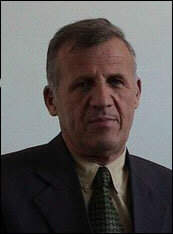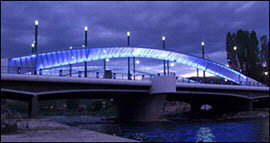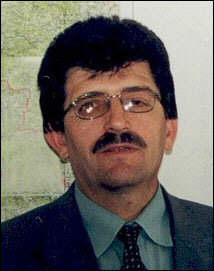 MINING, KOSOVO´S GOLD MINING, KOSOVO´S GOLD |
Mining and Kosovo go hand in hand. The region has been known to produce a diverse and considerable range of minerals and metals; from lead, zinc, silver and gold to lignite and coal. The deposits present in the region represent both Kosovo´s salvation but perhaps also its damnation. According to estimations by Reiinvest, a Kosovar Institute for Development Research, the total value of Trepça's reserves is in excess of 1.4 billion USD. Amongst the most valuable deposits of these mines is gold and abundant quantities of silver. The largest source of silver deposits is located in the " Stan Terg " mine situated east of the northern town of Mitrovica. According to a CSA program study, the Stan Terg site contains the largest quantified amounts of silver of all of the Trepca mines, some 64 grams of silver can be obtained per tonne of material extracted. One of the most valuable analyses conducted on the amount of resources and issues of Trepca was initiated by the organization "International Crisis Group". They created a detailed report that closely examined the current ownership problems and exploitation possibilities of the mines, together with the smelting complex in Zveçan. In addition Kosovo has considerable ore deposits exploited by Ferronikeli as well as coal and lignite.
When speaking of mineral resources in Kosovo the first name that pops into anyone's mind is Trepca. There are more than 40 mines and processing units that make up the Trepca giant complex. The location of these exploitation sites and processing facilities are evenly scattered across Kosovo, Serbia and Montenegro. According to official Serbian statistics, in 1996 this conglomerate was able to process and export in value of 100 million USD, making it the largest foreign exchange earner in the FYR at the time. Around 250-270 kg of gold and 800-1000 tonnes of silver were excavated and sold in international markets. In addition to these primary products, Trepca also produced a number of semi-finished and fully processed products; such as refined lead, zinc and silver, as well as gold, cadmium and certain petrochemicals. Phosphate, magnesium, batteries, artificial fertilizers and ammunition were also finished-products of this giant conglomerate.

Mr. Nazmi Mikullovci
General Manager of Trepca
The Structure of the conglomerate is very diversified and it includes a number of mines, and a range of factories for processing of all minerals extracted. Aside from the value of its precious deposits, the main advantage to the Trepca conglomerate of mines and processing plants is the interwined relationships amongst them and the cost effective production derived from their relative locations. As Mr. Nazmi Mikullovci, the General Manager of the complex explains, "we have the infrastructure and existing equipment in Trepca, which can enter production after having little refreshment". There are four distinct mineral processing stages that take place within the complex: exploitation, flotation, smelting and pouring processes. In 1989 the mine in Stan Terg, to the east of Mitrovica, secured up to 40-50% of all minerals produced in the area. The remaining mines situated in Kosovo - Hajvali, Novo Bërdë, Kishnica and Badoci - were estimated to produce 30% of Kosovo´s total mineral production. Two other mining exploitation sites, in Cërnac and Belo Berdë, are present in the area within a Serb enclave in the northern part of Mitrovica. The remaining three mines are situated outside of Kosovo, and it is estimated that their combined production amounts to 20% of "Trepça's" former processing capacities.
Minerals extracted from the Stan Terg site are refined in the flotation unit within the same facility, while minerals from the four other exploitation sites within Kosovo are processed by flotation in Badoc. The minerals extracted from Cërnac and Belo Berdë are later processed in Leposaviq. Before the conflict, the mineral concentrations that result from the different flotation units outside Kosovo were all smelted in Zveçan. Lead, zinc, silver, gold, cadmium and bismuth are later taken for further processing at the Battery Factory in Mitrovica and Peja, FAMIPA-in Prizren and in the Ammunitions Factory in Skënderaj. Hydrogen sulfide from Zveçan is also processed at the industrial-chemical complex of Mitrovica, while lead and cadmium after being processed in Mitrovica, are then sent for further industrial processing to Gjilan.
The lack of investment received by Trepca and its many different enterprises has created cases like that of Zveçan. Zveçan is located just a few kilometers northeast of the town of Mitrovica. The plant was renowned for producing large amounts of pollution that were released into the river Ibër which flows through the installation. Additional discharges of dioxide-sulfate a common bi-product of metallurgic processes, polluted the surrounding areas in levels which were not in line with current international environmental standards and regulations. UNMIK experts then concluded that the level of lead concentration in the town of Mitrovica and its surrounding areas was three times higher than the advised safety standards. Thus, On 16 August 2000 and after intense Serbian protest, KFOR military, under the instructions of the UNMIK interim administration forcefully took control of the facility and closed it. Trepca today "is under UNMIK administration, this is the only organization in Kosovo with this status. UNMIK does not administer all previous Trepca's structures, such as our mines in Serbia and Montenegro. Under UNMIK administration are Leposavic, a complex with 4 mines and the Led Metallurgy facility in Zvecan, MIP in Mitrovica, which includes Chemical Industries, Zinc Metallurgy, a battery factory, the largest mine in Stan Trg, and the mine complex near Prishtina", says Mr. Nazmi Mikullovci. This situation could have been remedied had the right investments been made. The plant cleaned up and the enterprise reactivated and turned profitable. Perhaps there is an overdose of diplomacy and a deprivation of free enterprise spirit that will allow Trepca to become viable again
Trepca is no doubt of huge political significance
and provides a great deal of power to whoever controls
it. So much so that to this day, Mitrovitza remains
the most disputed area within Kosovo. After 1974,
when the constitution of SFRY gave Kosovo advanced
status, Kosovars enjoyed a period of moderate control
over the Trepça resources. By the year 1981
the metal processing capacities of Trepca had grown
considerably. A new factory for battery production
was set up in Mitrovica, whilst a second unit was
developed in Peja for the manufacturing of industrial
batteries. Other factories such as Llamkos
and the NI-CD battery factory in Gjillan were also
upgraded and modernized. Further capital investments
were injected into the construction of a flotation
facility in Stan Tërgu . By 1983 Trepca did
not only produce bulk metal for international markets
but also a wide range of finished products. The
further utilization and processing of minerals opened
up new job opportunities and raised the salaries
and incomes for the Kosovar population as a whole.
After the year 1980 Belgrade's centralist policies
gradually regained control of the mines. In 1981-82
the scandal referred to as the "Trepça
gate" broke out where Albanian workers and
management were accused of allegedly stealing and
smuggling a considerable amount of metals for their
own profiting, primarily gold and silver. This was
one of the reasons used by Belgrade to dismiss most
engineers and technicians as well as the current
Albanian upper management of the enterprise. At
the end of 1988-89 the remaining Albanian management
and workers were dismissed from their jobs. The
mining Labor Unions at that time organized what
was called the "Winter March" in Prishtina,
followed with other supporting marches all over
the region. In February 1989 the miners organized
a hunger strike and many of them together with the
management were arrested and punished. These were
the first disputes over ethnic control of Trepca.
The events are now remembered as "Kosovar Solidarnost"-
and it can be considered as the earliest Kosovar
resistance against Serb occupation. Never mind the
different actions taken by the different sides their
disputes must be put aside in order to reactivate
the backbone of the economy that Trepca is. There
are also those who argue that Trepca was at the
center of the conflict between Serbia and Kosovo
from the very beginning. The fact remains that who
owns Trepca today is one of the biggest questions
for administrators to answer and political leaders
to debate upon. The logical end to these disputes
might be an equal partition of the enterprise amongst
all parties, even if this means destroying the infrastructure
net of mines and factories that make Trepca such
a sought after enterprise by everyone. While the
disputes might continue the enterprises potential
is gradually diminished. The opportunities for foreign
strategic investors in this case will be considerable
due to the wide range of possibilities offered by
the already present infrastructure and resources.
|
Thought the Trepca giant, this was once the main pillar of Kosovo´s economy and provided over 22,0000 jobs. The fact that it is currently at a complete standstill must be blamed on the lack of compromise in the interested parties, unfortunately this is for their detriment. There are no minerals being exploited and nothing is being processed so no one can really profit from this. A number of shareholders claim ownership over this conglomerate, the first of which are several Serbian banks and financial institutions and even the Serbian government.

Bridge in Mitrovitza separating Serbian and Albanian enclaves
In the year 1992 Trepca was transformed into a limited shareholding company whose outstanding debts pushed the enterprise into the hands of Yugoslavian banks, such as Jugobanka, Beograd and Genex who became its main shareholders. The second contested owner is the Greek company, Mytilienos Holdings, who were granted exploitation rights for extracting lead and zinc. Management at Mytilenos Holdings base their claims on the fact that a contract to the value of 50 million USD was signed in 1995 with the Serbian Government. This agreement was later expanded in 1997 with a transaction valuing 519 million USD to further reinforce the company's exploitation rights. Recently a number of other private shareholders from the UK, USA and France have also expressed to UNMIK interest in investing and commercializing certain parts of the enterprise. Currently the 2000 workers employed in the complex only maintain the mines and the machinery, whilst they prepare for production. Current management is eager to align the enterprise with foreign investors that might provide the necessary funding for the reactivation of at least some of its exploitation sites and metal processing operations. Nevertheless the ownership issues are not resolved and the future of the enterprise looks very bleak for the next three to five years.
But Kosovo´s mineral resources are more vast than just Trepca. Kosovo also has enough coal deposits to last the next five hundred years. In addition to the coal there is also another mining metal giant named Ferronikeli. Ferronikeli is a mine for nickel mineral processing and metallurgy complex situated in central Kosovo, about 40 km south west of Prishtina. "The scientifically verified reserves of Ferronickel are 15 million tonnes of ore, but we have geological indications that tell us that this amount could be much bigger, but we still need to research and find out the approximate figure of other reserves that Kosovo might have", says The General Manager Mr. Murat Meha. Production of nickel was first identified in central Kosovo in the 1960´s. The open pit surface mining plants developed in the late 70´s.
In the year 1984 Ferronikeli´s mining and metallurgic complex had been equipped with strong and very valuable machinery purchased from Western Europe that had opened the door for the production of ferronickel blocks. The Danish company F.L.Schmidt, provided two rotating blast furnaces for calcination of the minerals.The electric reduction blast furnaces were produced by ELKEM, Norway. The minerals were always mixed well before entering the melting process, which has maintained the machinery in very good shape; unfortunately it was later damaged by the NATO bombing.

Mr. Murat Meha
The General Manager of Ferronikeli
The German Krupp Company manufactured and installed the converter, where the last purification process of ferronickel takes place. The final product which contains approximately 35% of Ni was sold in blocks of 25. From its original capacities the complex is able to produce 10,000 metric tonnes of ferronickel per year.
According to Mr. Meha, "until 1991 the production was improving every year, and by then we were able to produce up to 7000 tonnes of nickel ". During its time Ferronickel became a very important regional supplier of ferronickel which had major commercial agreements to sell its products to large companies in Western Europe. After a number of years of declining output, it restarted with a reasonable sustainable production between the years 1996 and 1997, and it was closed only because of the conflict that was taking place in Kosovo at that time. Most of Ferronikeli´s capital equipment was damaged first by the occupying Serbian forces and a second time by the NATO bombings that destroyed most of its heavy equipment. Nevertheless, a very motivated local management and a small number of workers are currently working on daily maintenance repairs of the complex, but they need a strategic investor for restarting successfully.
Ferronikeli´s resources are abundant and within easy reach. The ore is found in two big lateral deposit strips. Both extraction sites are located very close to the metallurgic complex, the furthest one is only 28 km away. The average percentage of nickel in the mine is about 1.32%. Known reserves of the mineral are estimated to be 13 million metric tonnes. These deposits are suitably located within easy reach to the surface mining plant, so the unprocessed minerals are easily transported by trucks or railway to the processing plant. Large scale destruction has damaged most machinery and there have also been considerable structural damages inflicted upon the metallurgic unit. There is an urgent need for substantial amounts of investments, which will be imperative for restarting a very much needed processing line. According to current management the required investment for this project is estimated to be approximately 10,000,000 USD, while an additional USD 20, 000,000 are needed in order to enable the complex to achieve the full processing capacity that it is able to undertake. The first financial and economic analyses support the rentability of these enhancements. Today approximately 200 Kosovar workers are back in the factory, where they keep order, and maintain and repair equipment where ever possible. Many professional workers such as engineers and geologist are also ready to get back into their post in order to help the company restart its operations.
Feronikeli marketed its products mainly to the European metal metallurgy industry and especially to producers of unsustainable steel in Germany and Austria. The General Manager Mr. Meha explains that "Ferronickel has always exported its products, since steel was not produced here, and all our production went directly to the European market straight". Transportation of these products was done primarily with trucks through Yugoslavia. Like many other logistics it has become another obstacle for the enterprise since most of its export markets are located is Western Europe. Today these products must now be delivered through alternative routes, mainly through the southern part of the Republic of Macedonia, or west through Albania, where it can get to the consumers through a combination of either trucks, railways or boats. Considering all of these adversities, the enterprise still has many competitive advantages in regards to other producers. Not only its cost efficient production but also its proximity to the biggest consumers of its products who are located predominantly within Europe. Demand for Ferronikeli´s products remains high, although the competitiveness of its prices are still to be proven through the test of free markets.
Restarting of production and the revitalization of Ferronikeli as a viable enterprise must be based in today's market needs and maintains the full support of UNMIK, as well workers and management. In June 20002 Ferronikeli entered a partnership with the Swiss company Surely. This will place the enterprise within the top metallurgic mining enterprises within Europe and the world. |

